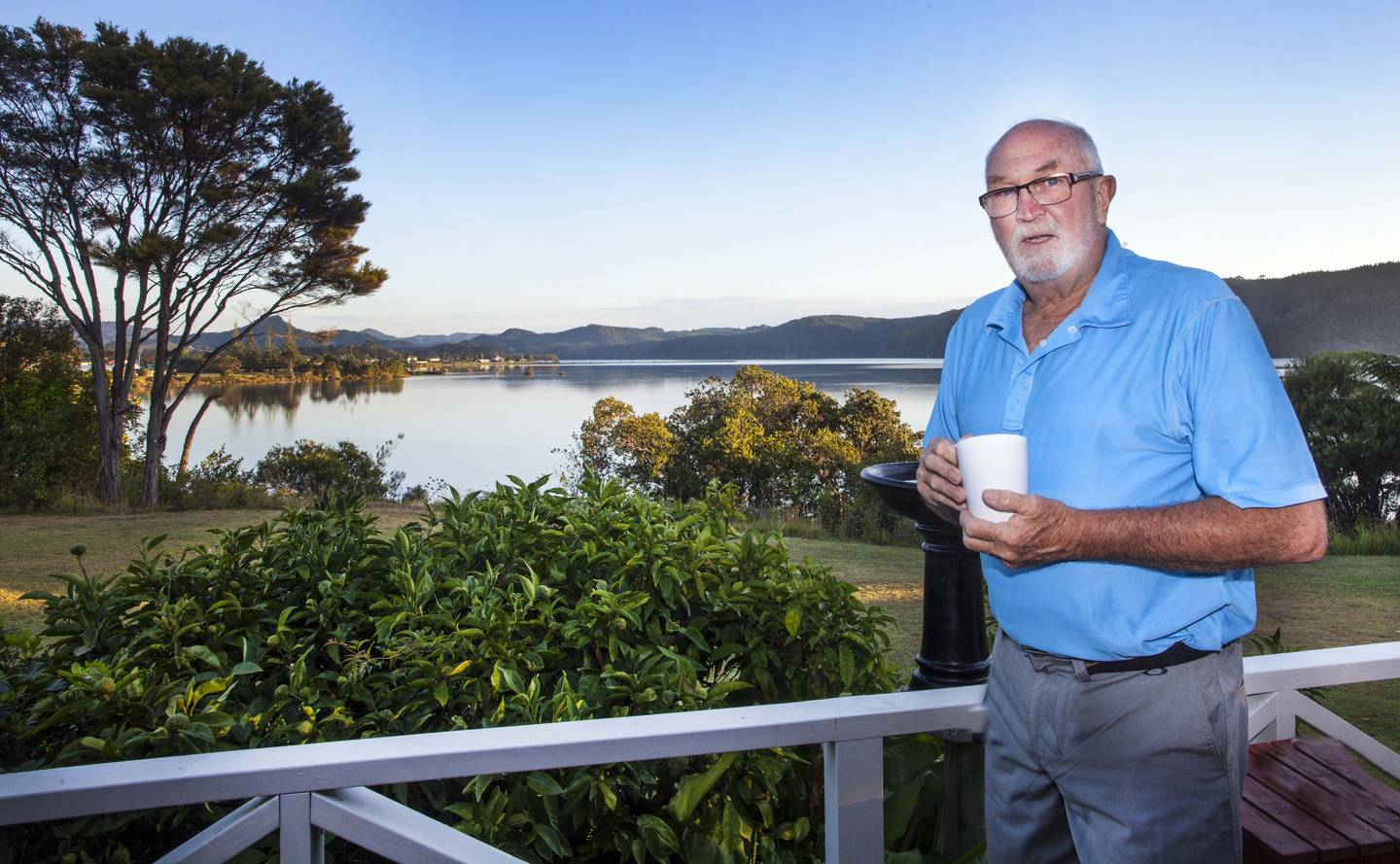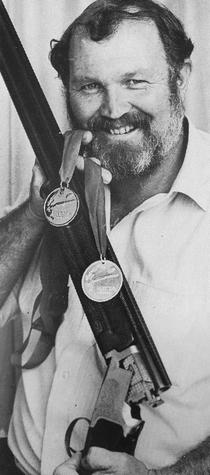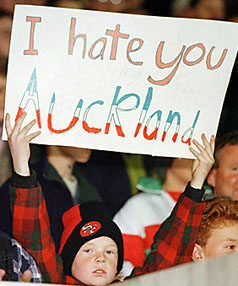Former Christchurch Star photographer John McCombe, regarded as an "institution" among this country’s news snappers, died at his home last week, aged 75. Former colleague Dave Cannan, assisted by several past workmates, compiled this tribute to their old friend . . .

It was just his typical, self-effacing way, his family explained.
"Dad said he was a professional; by taking good photographs he was just doing his job," said son Kevin.
That’s not to say John wasn’t proud of his work. But his modesty overshadowed even a hint of ego; any praise was brushed off deftly and politely, the focus of conversation quickly changed or diverted.
McCombe’s death at his Whangamata home on April 29, surrounded by family, greatly saddened and shocked his numerous friends and former workmates. Only diagnosed a couple of weeks earlier with pancreatic cancer, his rapid deterioration defied optimistic opinions that he might have a month or so longer to deal with his illness.

"It’s still not sinking in that he has gone."
The pair were partners in a commercial photography company Photosouth Photographers, a business started by McCombe and his wife Cheryl in 1990 after John left the Christchurch Star around the time the North Island owners were carrying out a series of redundancies.
And how that partnership with Alexander evolved says much about McCombe’s trademark generosity of spirit.
Alexander recalled his last day as a photographer at The Press, in 2009, and feeling a “bit tearful,’’ then he got a phone call from McCombe.
“He said: ‘Hey David, welcome to the real world mate, but don’t worry, you’re a good photographer and I’m going to help you out in any way possible’ – and he did.’’

Another former photographer colleague who experienced McCombe’s generosity was Don Scott, who recalled: “I joined The Star in 1982 and six years later, without being asked, John and Cheryl mortgaged their home to give my wife and I a start. How does one ever repay that?’’
John Quenton McCombe was born in Wellington on August 2, 1945 to Bob and Cherie. A brother Bryan would arrive later. The family later moved, first to Hawkes Bay and then to Thames as Bob was transferred through his job with New Zealand Post.
One of Bob’s hobbies was photography, which was to influence his son’s decision when it came to choosing a career after leaving Thames High School. Initially McCombe thought of becoming a teacher and duly enrolled at Ardmore Training College near Auckland.
But when a job for a cadet photographer at the Thames Star newspaper was advertised, McCombe abandoned his teaching aspirations and began his media career on April 24, 1964.
It was to prove a life-changing decision and McCombe would go on to work as a highly-regarded news photographer for the Sunday News (1965), the Waikato Times (1967), The Press in Christchurch (1972) and then the rival Christchurch Star (1975) for the next 15 years.
Later, as a freelancer, he was the Christchurch-based photographer for both the Sunday Star Times and the NZ Women’s Weekly while he was the foundation photographer for the Avenues magazine from 2009, the same year he published a glossy photographic book Images of a Nation – Canterbury; A Journey from the Heart.
In 1966, when he worked for the Sunday News, McCombe married Cheryl Cullen, whose father Clarry also worked for NZ Post in Thames.
Shifting his family to the South Island in 1972 to work at The Press was a massive career move by McCombe. He was a member of the morning newspaper’s first illustrations department, headed by Les Bloxham, and worked alongside Des Woods, Barry Sharpe and Nev Marriner.
But across town McCombe soon got to know his Christchurch Star rival cameramen well, often enjoying their company socially, usually at the now defunct New Albion Tavern in Colombo St, and thriving on the competitive nature that existed between them, especially with Stuart Menzies.
And therein lies a classic tale about two mates, which Menzies describes as "the best gotcha ever".
"Drinking at our watering hole, the Albion, one afternoon, stupid me told John about our little dog going missing and our daughter Kristy being really upset. Shortly after John said he had to go, he had some work to do.
"The next morning, when I turned up at work, the editor Michael Forbes called me into his office [for a please explain]. On his desk lay a copy of The Press and on the front page there was a photo of my daughter sitting in the little dog’s box.
"John had even conned my wife into keeping it quiet from me. My best mate had got me a beauty.’’

"By early afternoon nothing was happening, it was so boring," Menzies says, "and John said: ‘I’m going to get a pie’.
"He stood up, turned around and ‘bang’, there was a wicket. Smiling, I said ‘that was a great shot’. There were no more wickets and my old mate was very quiet for the rest of the day!."
And so, in 1975, McCombe jumped ship and joined his Kilmore St-based evening paper contemporaries, the illustrations department being run by Max Wederell, who commanded a star-studded team that included Menzies, Neville Hawke, Derrick Tonkin, and in later years Simon Baker, Don Scott and several others.
Working alongside these "guns" brought out the best in McCombe as both a photographer and a journalist, honing his skills alongside his talented colleagues. Former Star chief reporter John Crowley recalls McCombe becoming "the complete newsman".
"John’s skills were not confined to those of a photographer when we went on some of those more challenging jobs. His extra sharp news sense was underpinned by multi-layers of care and compassion.
"These were traits which helped reporters – young and old. In the most stressful times he was a cool head and a guiding hand at arm’s length. These qualities were so apparent too when it came to his own profession – one in which he had few peers."
McCombe would eventually become The Star’s chief photographer and continue to have a major influence on his team, including Baker, who joined the camera crew in 1986 as a "young, naive lad from the Waikato."
"Right from the first day John made me feel welcome. He was always there for advice and guidance as I tried to justify my place amongst the team of talented photographers."

"John had left to do the same thing a year earlier, so we were to be direct competitors in Christchurch, but this didn’t faze him. He generously offered his darkroom and other equipment to me as I started to get my business up and running. And we continued to work alongside each other for the next 25 years."
But it wasn’t just photographers at The Star who benefitted from McCombe’s professionalism and warm-hearted attitude to his newsroom contemporaries.
Reporter Debbie Hannan describes him as "the glue that held us all together."
"He was one of those people in life that made everyone feel special, which is what I think made him such an exceptional photographer and workmate."
Hannan also recalls during the often violent 1981 Springbok tour when McCombe acted quickly to save her from possible injury after getting caught as the "meat in the sandwich" between protestors and the infamous police Red Squad.
The pair were assigned to cover the pre-match clash outside the gates of Lancaster Park, knowing Star management had secured a "safe house" across the road, just in case things turned nasty.
"Things started to heat up, but I naively didn’t see just what danger I was in as a big line of protestors came towards me one way and the Red Squad was coming the other and I was in the middle.
"Out of nowhere John came racing towards me and pushed me into the safe house. For a moment the photographer was off duty on the biggest story of the day to make sure his workmate was safe."
Being good at his job was only one facet of McCombe’s endearing personality. He was an incurable practical joker, who loved playing pranks on his colleagues, but he was also quick-witted and resourceful, as recalled by reporter Brian Cowley.
"On the one hand, he was the consummate professional, charming and calming his nervous subjects with soothing banter and achieving the desired photograph by means of mutual co-operation.
"Then there was the devil-may-care character who would startle the reporter accompanying him with an impromptu cameo from the McCombe playbook of crazy tricks."

When they arrived, he apologised for their tardiness, saying the “traffic wasn’t with us’’, which, Cowley says, was no lie!
Away from his work, McCombe was a man of many interests, chief of those being his family. But he was also an avid hunter, fisherman, boatee, golfer (later in life) and a crack clay target shooter.
How many colleagues knew he was the 1992 New Zealand clay sparrow champion shooter and a national clay target shooting representative while a member (and former vice president) of the Belfast Gun Club?
Indeed, daughter Melody recalls a quote from North Canterbury artist Sam Mahon, in his book The Year of the Horse, about her father – "he went hunting with dad and wrote that dad was as artful with a gun as he was with a camera."
What they are more likely to remember are the many great times enjoyed at the McCombe’s homes in Tancred St – where plans for the infamous Media Club in Chancery Lane were first hatched – and later at Rockinghorse Rd, South New Brighton.

As McCombe told the New Zealand Herald in February 2015, the four-year anniversary of the big quake, he and Cheryl spent the night in Whangamata and, on a whim, called a real estate agent and found themselves inspecting a lovely home overlooking the harbour.
Impulsively – or was it instinctively? – they made an offer and a few months later began a new chapter in their lives in the Coromandel.
McCombe said the speed of the decision stunned family and friends – “I think they must have thought we’d gone off our rocker a little bit’’ – but it proved to be “the best decision of our lives."
He joined the local golf and boating clubs and took a keen interest in environmental issues, eventually becoming an outspoken chairman of the Whangamata Harbour Care group, leading the charge on mangrove eradication.
In a Facebook exchange (he ended up with three different pages) in June last year, McCombe agreed it was a case of “paradise lost’’ in Christchurch but "paradise regained" in Whangamata.
And it’s in that beautiful town, at the golf club today that friends and family will farewell the genial McCombe, a big man with a heart and a personality to match.
McCombe is survived by his wife Cheryl, children Melody and Kevin, three grandchildren and one great granddaughter.












